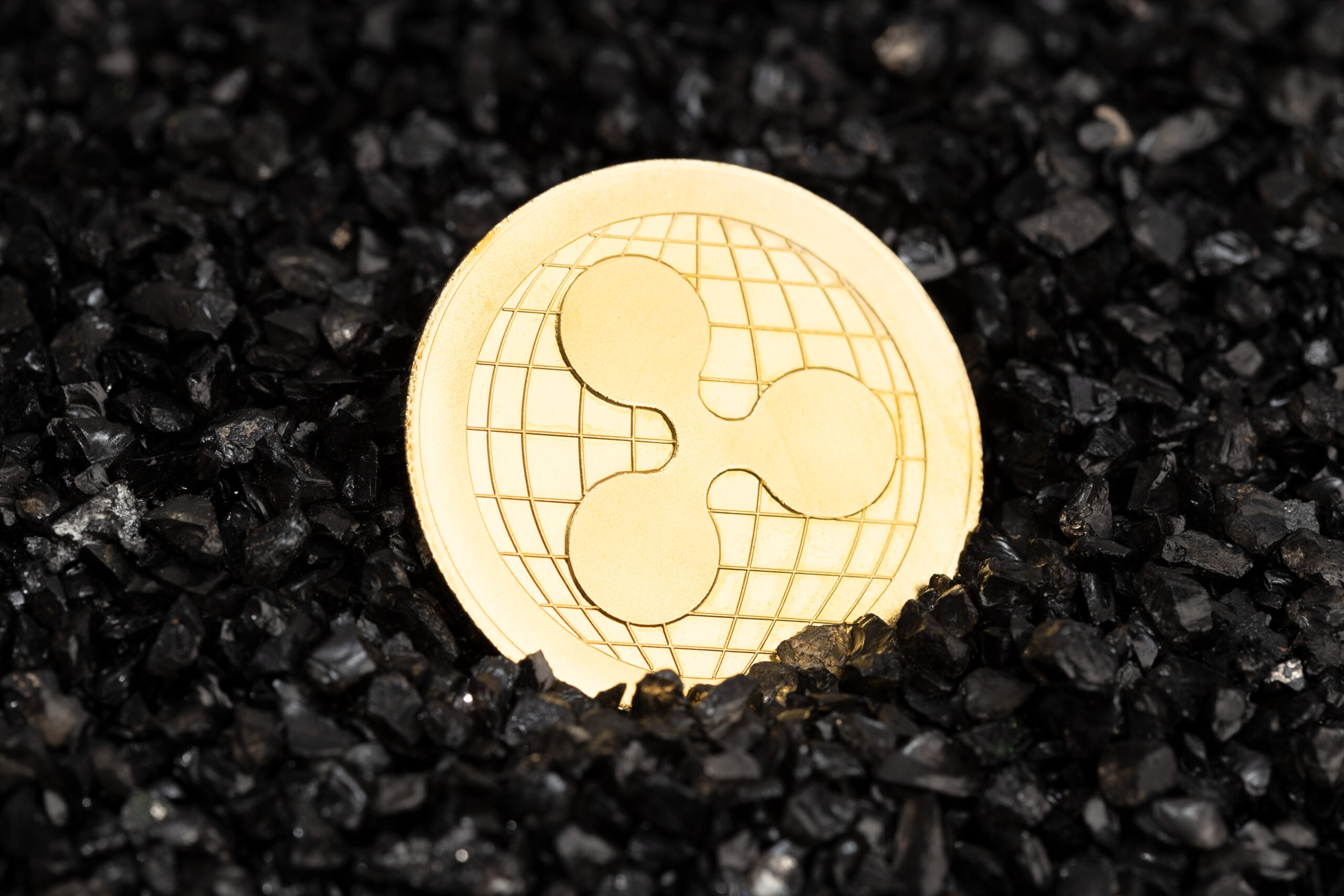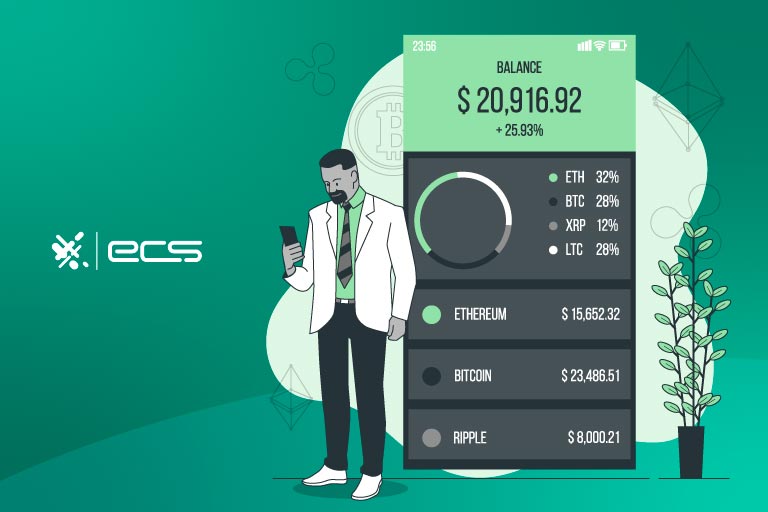In this article we are taking a deep dive into what is XRP and Ripple crypto, explaining how it works, and how it compares and competes with existing settlement layers such as SWIFT.
The promise of cryptocurrency has always been to provide a fast, inexpensive, and reliable payment network. It is a cashless payment system that bypasses the traditional banking transactions that many individuals and even countries have come to rely on, such as debit card and credit card payments.
During the early days of cryptocurrency development, that seemed like a rather lofty and almost unattainable goal. But with the release of the Bitcoin whitepaper and token in 2009, it seemed as though someone had cracked the code on how to create a viable cryptocurrency that could be capable of fulfilling that promise.
Since then, many tokens and various blockchain networks have been introduced. Each one looking to fill a void or meet a demand that Bitcoin couldn’t.
One of those that emerged to much fanfare was the XRP token launched by Ripple. This centralized token and network promised to be able to deliver lightning-quick settlements and cross-border transactions. All with lower fees and easier implementation than existing settlement systems or wire transfers.
What Does XRP Stand For?
Ripple is XRP stock. Meaning, XRP is the token issued by Ripple. It is simply a designation on exchanges similar to stock tickers. Which can be variations or abbreviations on the company name. The digital currency Ripple is designated as XRP for trading purposes

What is XRP Cryptocurrency?
Co-founded by Chris Larsen and Jed McCaleb, XRP is a token or cryptocurrency that is used on the XRP ledger (XRPL) system. The XRP ledger is a distributed ledger system. Which means independent nodes on the network verify the integrity of the ledger at regular intervals.
The ledger in a blockchain is a record of all transactions of that specific digital currency.
By constantly verifying the ledger between nodes, the overall integrity of transactions can be maintained efficiently. Without the need for a centralized system like with traditional settlement layers.
It’s common to use the terms XRP and Ripple interchangeably, but they are two separate parts of the network. As described above, XRP is the token and underlying blockchain ledger.
Ripple is the organization behind XRP as well as RippleNet. Which is the host of fintech products that operate within the XRP blockchain. You may see people mention the Ripple cryptocurrency, but they usually mean the token XRP.
Difference Between XRP And Bitcoin
Most people are likely familiar with Bitcoin and often think that XRP is similar to Bitcoin. But it’s important to understand the differences between these two cryptocurrencies. It’s this difference that makes XRP suited to be a settlement layer between banks. While Bitcoin is not really suited for such a task.
Centralized vs Decentralized
The key difference for XRP is that it is not a decentralized system like Bitcoin is. What this means is that Ripple essentially controls the nodes on the network which does the validating. Although they work like decentralized nodes to verify transactions, they are not each controlled by independent parties. Instead, they are all controlled by Ripple and known as a unique node list.
In contrast, a decentralized cryptocurrency like Bitcoin has nodes or “miners” that validate transactions during the mining process. This process involves miners or specialty-built computers that solve complex mathematical equations.
Transactions are embedded within these mining blocks. When a block is “solved”, other miners confirm it and the embedded transactions can go through. All validations and transactions are updated and held by the individual nodes.
This is why cryptocurrency has built-in validation. If someone tries to make a false or fraudulent transaction, the other nodes realize it was not a real transaction. they will then purge it from the distributed ledger. Since everyone has access to the entire history of the ledger, a fake transaction cannot be entered without being detected.
The problem with the decentralized method is that although it is very secure, it can be slow as the miners need to work through the transactions one block at a time. There is a computational time that inherently limits the speed of the network.
XRP Is Pre-mined
XRP addresses this issue of speed through the use of “pre-mined” tokens. Instead of miners constantly solving blocks to confirm transactions and create new tokens, the XRP token was pre-mined. A total of 100 billion tokens were initially created to launch the XRP ledger and blockchain.
These tokens can be released as needed. Ensuring the liquidity and stability of the XRP ledger and the overall Ripple ecosystem.
The key point is that while XRP operates on a distributed ledger known as XRPL, it is centralized and the tokens (XRP) are not mined like most conventional cryptocurrencies such as Bitcoin are.
Although not a financial concern, many advocates of XRP believe it to be a more ecologically friendly cryptocurrency. Mining requires large amounts of electricity, which some feel is wasteful. Since XRP is pre-mined, the nodes require far less power and the entire network can run very efficiently considering how large it is.
This also means the system can scale up very easily without requiring a huge amount of infrastructure to be added.
SWIFT Problems that XRP and Ripple Can Resolve
One of the areas that Ripple and XRP will succeed as a payment settlement product is with cross-border transactions or global payments.
Currently, the solution to cross-border payments is the SWIFT (Society for Worldwide Interbank Financial Telecommunications) system.
SWIFT is essentially a member-run “banking” system in cooperation with central banks. It works as a messaging system to facilitate financial transactions. Since it is mostly a messaging system, it simply communicates debits and credits between banks.
The SWIFT messaging system does not move any actual funds across the network. SWIFT works by using a series of codes known as SWIFT codes to communicate between banks.
The problem and limitation of this setup is that although the SWIFT communication can take only minutes to go between the two banks, the actual settlement of the transaction can take days. It’s not uncommon for the final settlement to take up to 5 days for many cross-border transactions.
If the two banks already have an established relationship and are part of a popular “corridor” of SWIFT payments, the settlement can take as little as 30 minutes. However, it’s this wide discrepancy between 30 minutes and 5 days that is one of the problems with SWIFT.
It’s also important to note that not all banks use the SWIFT system. This is especially true of smaller banks. It’s not easy for them to become a part of the SWIFT network. So many will not do it in the near future.
Nostro/Vostro Banking Accounts
Another inefficiency with international payments is the funding of Nostro/Vostro accounts. It’s important to understand these accounts as XRP helps to do away with them.
For faster settlements, banks need to pre-fund Nostro/Vostro accounts so that money is available in a specific currency. When a SWIFT transaction is initiated, money can be moved from these pre-funded accounts when the messaging of the transaction is completed by SWIFT.
But this means that for multi-currency transactions, Nostra/Vostra accounts must be pre-funded with all different currencies. This is not only inefficient, but it also ties up billions of dollars around the globe that could be used for more productive purposes.
Although the SWIFT system does work, it is also a cobbled-together system that is quickly showing its age in a time when people want instant digital transactions.
There are many downsides to this system compared to the XRP network. Below is a list of the most prominent issues with SWIFT.
Costs
The SWIFT system involves a lot of intermediaries which can charge a fee that drives up the costs. The exchange rate used by the banks involved is done using the prevailing spread. Which is often worse for the sender of funds. So this further drives up costs

Prone To Errors
Due to the number of intermediaries and various systems, the chance of an error is much higher than it should be with SWIFT. Typically, the SWIFT system can see an error rate of about 5%.
Time
The final movement of funds can take anywhere from 3 to 10 days in some cases. This can be sped up with Nostro/Vostro pre-funding. But this requires a previously established relationship between the two banks, a process known as correspondent banking.
As we’ll explain in the next section, XRP eliminates the need for correspondent banking which promises to eliminate a lot of the downsides listed above.
How XRP Is Different Than Swift?
The main difference is that XRP represents an actual transfer of value, not just information about a credit or debit. Because of this, XRP is part of a real-time gross settlement system or RTGS.
When you transfer XRP, the actual full value of the transaction is sent. Once verified by the unique node list, the transfer is complete and the receiving bank or individual now has the full value in their possession. The transaction is fully settled.
The receiving bank can then turn the XRP into USD or their local currency. Whichever they prefer. They can also keep it as XRP if they want and the total is based on the XRP price at the time.
This also frees up the need to hold Nostro/Vostro accounts in all different currencies or amounts. When an entity needs to transfer funds, it can simply buy the corresponding amount of XRP and send it. The recipient can then convert that money however they choose. There is no need to hold different currencies to quickly settle transactions.
This is why XRP is often referred to as a “bridge asset” or bridge currency. As it bridges two different currencies in a way that is easier to manage and send than current methods.
Many people ask what is the world bridge currency now, and there really isn’t one. The U.S. dollar is used for settlement around the world, but it’s not a true bridge currency.
The Different Systems Under Ripple
Several key systems within the Ripple xCurrent ecosystem allow it to be used as a settlement service and be more efficient than current systems.
Messenger
This is similar to the SWIFT system but with XRP transactions this is only one component of the system and not the entire technology.
The messenger system on the Ripple network is bidirectional. Meaning financial messages can be transmitted in both directions. Allowing for complete communications and error resolution between banks in real time.
Information such as KYC data, risk assessment, and other details of the transaction can all be included with the messenger functionality.
By itself, the messenger technology on the Ripple network replaces most of the SWIFT functions.
ILP Ledger
This is one of the key components of the XRP network that removes intermediaries found with SWIFT and helps to reduce errors to near zero.
The ILP ledger or inter-ledger protocol is an open-source communication network between the different payment layers and networks. This allows direct communication between parties.
Each participating bank has its own sub-ledger that is updated and verified through this protocol. This also allows settlements to happen almost instantly and also for any error to be quickly detected and rectified.
FX Ticker
As the name suggests, the FX Ticker component of the XRP ecosystem provides a way for the different exchanges and institutions to share FX rates for the various currencies. This level of transparency is available to everyone on the network so exchange fees can be known by all parties.
The FX Ticker is also integrated into the IPL Ledger so all fees can be validated and shared across the network.
Validator
This component of the XRP network handles the transfer of funds and ensures all data is accurate and confirmed before settling the transaction. The validator allows for communication across the IPL Ledger and acts as the final check for each transaction
Three Core Systems Of XRP’s Network For Banks and Individuals
xCurrent
xCurrent is the software and technology that banks integrate into their existing systems so they can access and use RippleNet and XRP. It was designed with the banks in mind and is meant to allow for fast and easy integration that remains in compliance with existing regulations regarding sending payments, especially across borders.
Much of xCurrent is handled automatically through a series of modules within xCurrent. Those modules are listed below along with an explanation of each one
xRapid
Xrapid is the system within the XRP ecosystem that provides near-instant liquidity regardless of the originating currency or destination currency.
For example, a financial institution would first connect to exchanges in the sending location as well as the destination location. The original currency is immediately converted into XRP for liquidity. The XRP is then sent and instantly converted into the destination currency. The payment can then be delivered via the local rails within the destination country and financial system.
This on-demand liquidity provided by xRapid is what allows for funds to be sent immediately and without the need to pre-fund Nostro/Vostro accounts with various currencies.
xVia
xVia is how customers connect to the Ripplenet. It does this via the API. Allowing institutions and exchanges to easily connect to the RippleNet and start initiating transactions or using the other services within Ripplenet
What Gives The XRP Token Value?
At this point, you may be wondering why or how the XRP token has any value to facilitate transfers as a bridge currency.
With the SWIFT network, payments are always sent in some nation’s currency, so the value for those currencies is dictated by various factors such as supply, interest rates, and exchange rates.
XRP has a limited supply of 100 billion tokens, there are no new tokens added to the system or mined at any time. Ripple releases a certain amount of XRP as needed and a portion is also held in escrow.
XRP is also traded on cryptocurrency exchanges which helps to stabilize its price, similar to other currencies.
Ripple as an organization holds about 20% of all XRP. Providing an incentive for the company to maintain the value of the token and the network. So in other words, XRP has value because it is maintained as a traded asset. Its value is determined and maintained much like any other traded asset.
However, this ownership and distribution of XRP is one of the controversial aspects of the system and one that detractors often point to as a downside.
Several founders of Ripple have either received or are promised to receive large quantities of XRP over time. This can allow them to technically manipulate the market price of the token if they wanted to due to them holding such a large quantity of XRP.
While this is true and possible, traditional currencies are often manipulated for specific gain by the various nations that issue them. So market manipulation of specific currencies is not entirely new and the current payment systems can be victim to that as well.
This doesn’t mean manipulation is acceptable, but it is a common risk with almost all currency systems and safeguards are in place to keep this under control.

How Are Fees Handled On The XRP Network
With the SWIFT network, there are fees along the route of the transaction charged by the intermediaries or institutions involved in the transaction. This can be as high as 10% in specific cases or a flat rate of around $30. These are paid in the currency being sent.
With RippleNet, transactions burn off a certain amount of XRP as fees for the transaction. This causes XRP to be deflationary as the more it is used, the less XRP is available. This mechanism is meant to boost the XRP price over time.
Exchanges within the network that are converting the currencies will also charge a fee. That fee can be paid in various ways, either through a base cryptocurrency used on the exchange such as Bitcoin, or an amount of XRP.
Overall, fees can be as much as 90% lower using XRP and RippleNet versus SWIFT. This can be huge cost savings for many institutions involved in repeated large transfers of funds. The elimination of Nostro/Vostro accounts adds to these savings as that money can now be freed up for other uses or placed into higher-earning financial products.
Controversy Surrounding Ripple And XRP
You’re likely thinking that XRP and Ripple are a perfect alternative to SWIFT and banks should be switching any minute to this cheaper, faster, and more secure system.
While it is true that there is high demand for this product, there have been some controversies and roadblocks that prevent its immediate adoption.
Most of this comes from regulatory hurdles. Ripple introduced XRP and the XRP ledger in 2012. This was during the “wild west” era of cryptocurrency where little if any regulation was in place. Not only that, cryptocurrency was barely on the radar of regulators.
But the explosion in popularity of Bitcoin and Ethereum changed that. Soon the SEC (Securities and Exchange Commission) was taking a close look at all cryptocurrencies.
The SEC is currently investigating Ripple and XRP to determine if the XRP token is a security. If XRP is deemed to be a security, then it falls under very strict regulatory guidelines, and the original issue of XRP tokens was likely illegal.
This investigation and litigation is currently ongoing and many observers expect an answer or resolution sometime during the summer of 2023.
Whatever the outcome is, Ripple and XRP have paved the way for a global payment system far superior to what is available now. Even if XRP is stopped due to regulation, it’s likely a very similar system will be implemented sooner rather than later that shares many of the same characteristics and innovations.
Additional Information About Payment Systems
If you’re a merchant involved in payment processing, contact ECS Payments. We specialize in cutting-edge payment solutions using the latest technology and innovations.
Whether you do business online, in-person, or across borders, ECS Payments can help you integrate the payment solutions that enable your business to succeed in the digital age.
